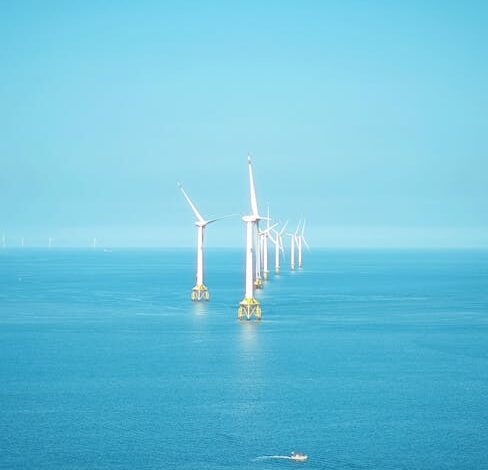The Sustainability Data Deluge: From Insight to Inertia

Let’s talk about sustainability. Not just the buzzword, but the messy reality of it. For years, businesses have grappled with a monumental task: collecting vast amounts of environmental, social, and governance (ESG) data, trying to make sense of it, and then actually doing something meaningful with it. It often feels like wading through a data swamp, armed with a tiny spoon, while the clock is ticking on global climate goals and regulatory demands.
The intention is there, the data is often available, but the bridge between raw information and intelligent, verifiable action has been largely missing. We’re talking about a chasm that separates good intentions from tangible impact, compliance reports from operational shifts, and reactive fixes from proactive strategies. What if we could automate this journey, not just for efficiency, but for true, systemic change? What if sustainability management could be as intelligent and dynamic as our most advanced operational systems?
This isn’t a pipe dream. It’s the promise of a new era, ushered in by innovations like Preshent’s JR AI. Built on the robust Preshent OS and backed by the formidable capabilities of DeepX, JR AI isn’t just another data analytics tool. It’s designed to transform how organizations approach sustainability by turning fragmented data into intelligent, automated actions. Let’s dive into how it’s reshaping the landscape.
The Sustainability Data Deluge: From Insight to Inertia
Picture the typical sustainability manager’s desk. It’s likely buried under spreadsheets, compliance reports, energy consumption logs, supply chain audits, and maybe a few well-meaning but often disconnected initiatives. The sheer volume of data, coming from diverse sources – energy meters, financial records, supplier reports, carbon accounting platforms – is staggering.
The problem isn’t usually a lack of data; it’s the lack of cohesion and actionable intelligence. Trying to manually consolidate, verify, and analyze all this information is a Herculean task. It’s time-consuming, prone to human error, and often leads to insights that are outdated by the time they’re ready for presentation. This lag creates a significant “action gap.” We know we need to reduce emissions, conserve resources, and ensure ethical practices, but translating that knowledge into swift, effective operational changes often proves incredibly difficult.
Connecting the Dots: Renewable, Financial, and Blockchain Data
One of the core challenges has been the siloed nature of critical sustainability information. Renewable energy generation data might sit in one system, financial impact figures in another, and crucial supply chain transparency data in yet another. To truly understand and manage sustainability, these disparate pieces of the puzzle need to connect seamlessly. This is where Preshent JR AI steps in, by integrating renewable, financial, and even blockchain-verified data into a unified, intelligent framework. The ability to cross-reference energy usage with financial spend and then verify origins or impacts via immutable blockchain records is a game-changer for transparency and trust.
Preshent’s JR AI: Intelligent Action at Scale
So, how does Preshent’s JR AI tackle this complexity? It’s more than just a fancy dashboard. At its heart, JR AI, powered by Preshent OS, is an intelligent automation engine designed to bridge that notorious action gap. It’s about moving beyond reactive reporting to proactive, self-optimizing sustainability management.
Imagine an AI that constantly monitors your energy consumption patterns, financial flows related to sustainability investments, and even the verifiable provenance of materials in your supply chain. It doesn’t just flag anomalies; it understands their context, predicts potential issues, and even suggests or executes automated adjustments. This is where DeepX comes into play, providing the advanced AI and machine learning capabilities that allow JR AI to not just process data, but truly learn, adapt, and make intelligent decisions.
Transforming ESG Data into Actionable Insights
For too long, ESG data has been a compliance burden, a static report handed to stakeholders. Preshent JR AI changes this by transforming raw ESG data into dynamic, actionable insights. Think about proactive compliance: instead of scrambling to meet regulatory deadlines, the system can anticipate requirements, suggest adjustments to operations, and even auto-generate compliant reports, backed by verifiable data. This frees up sustainability teams to focus on strategy and innovation, rather than endless data collation.
Transparent tracking is another huge benefit, especially with the integration of blockchain-verified data. Businesses can offer irrefutable proof of their sustainability efforts – from carbon offsets to ethical sourcing – to consumers, investors, and regulators. This builds trust, enhances brand reputation, and future-proofs operations against increasing scrutiny.
Perhaps most exciting is adaptive system optimization. JR AI doesn’t just report on what happened; it learns from it. It can identify inefficiencies in real-time, optimize resource allocation, and even recommend adjustments to operational processes or energy grids to improve sustainability performance continuously. It’s like having a dedicated, intelligent sustainability expert constantly working to make your operations greener and more efficient, around the clock.
What “Intelligent, Verifiable Sustainability Management” Truly Means
This isn’t just about making sustainability easier; it’s about making it more effective, more trustworthy, and fundamentally more integrated into the DNA of an organization. “Intelligent action” implies a system that not only understands what needs to be done but also has the capacity to execute or facilitate those actions with minimal human intervention, based on real-time, verifiable data.
Consider a large manufacturing plant. Traditionally, optimizing energy use might involve quarterly audits and manual adjustments. With JR AI, the system could continuously monitor energy consumption across different production lines, cross-reference it with production targets and even weather patterns, and then automatically adjust machinery settings, HVAC systems, or even switch to renewable energy sources when optimal – all based on an overarching sustainability goal, verified by transparent data flows. The result? Lower costs, reduced environmental impact, and verifiable progress.
This represents a profound shift from a fragmented, often reactive approach to a holistic, proactive, and continuously optimizing model. It allows companies to move from simply *reporting* on their past sustainability performance to actively *managing* and *improving* it in real-time. It’s about turning sustainability from a cost center into a core driver of efficiency, innovation, and long-term value, with every action traceable and every claim verifiable.
The Future is Actionable, Transparent, and Automated
The challenges of sustainability are immense, but so are the opportunities for innovation. Preshent’s JR AI, with its foundation in Preshent OS, its intelligence from DeepX, and its commitment to integrating diverse data streams, including blockchain verification, offers a compelling blueprint for the future. It’s a future where sustainability isn’t just an aspiration but an embedded, intelligent, and automated part of how businesses operate.
For leaders, this means moving beyond guesswork and manual labor to data-driven confidence. For employees, it means streamlined processes and a clearer path to impact. And for the planet, it means a more efficient, transparent, and ultimately more effective path towards a sustainable future. It’s not just about managing data; it’s about empowering intelligent action, verifying impact, and building a better tomorrow, one automated, verifiable decision at a time.





